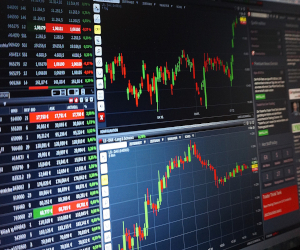
Analysts, both financial and non-financial, believe that the value is more important than price. That the former is superior to the latter, and that it is necessary to devote more time to evaluate the underlying company, notably by integrating ESG criteria to improve the DCF, rather than trying to understand the level and evolution of the share price. Yet the portfolio managers they advise are judged on share price evolution and not on their valuation. Hence their interest in a better understanding of price dynamics. Analysis by Eric Galiègue, Chairman of the SFAF Valuation Commission, and Lionel Pellicer, member of the Valuation Commission.
What is the link between price and value? By virtue of what do prices move towards value, or vice versa?
In the field of value, future cash flows, the main pillar of valuation, constitute the attraction of the share. It is their level, both absolute and relative, that must attract investors and drive up the share price to value. This arbitrage reasoning should ensure that the price does not deviate from the value in the long term.
As far as price is concerned, the use of increasingly sophisticated algorithms takes things a step further: it is now possible to formalize price dynamics.
The link between price and value
The formalization we propose is inspired by physical science. In the absence of an established trend, movement is said to be "Brownian", i.e. essentially random and subject to no interaction other than minor and sometimes opposing movements over short periods of time. If this "Brownian" movement is applied to equities, the stock is not directional, but oscillates in one direction or the other according to unspecific news. This also goes back to Newton's 1st law and his principle of inertia, i.e. that motion perpetuates itself at constant speed in the absence of external force. This market phase is not very profitable for an investor.
A trend responds to Newton's 2nd law, the fundamental principle of dynamics, i.e. that a force will provide an initial acceleration enabling motion to move in a given direction in the absence of an opposing force. For equities, this means that a stock can benefit from significant movement in a given direction - up or down - based on specific information (earnings, governance) or a macroeconomic trend (interest rates, inflation, growth). Contrary to the principle of inertia, in a trend, speed can vary without changing direction. This explains, for example, short-term consolidations in a long uptrend. Opposing forces act to boost prices, but not enough to change the direction of the trend.
The danger of a lasting divergence between price and value
Significant divergence between share price and value is nothing new. In recent years, however, these divergences have become increasingly long-lasting and wide-ranging. A price well above fair value enables the company concerned to raise funds at a low cost. A high price leads to a lower profitability requirement: the company will place its new shares more easily, at a lower cost of capital.
On the other hand, if the share's value is undervalued, the company will have to offer investors a higher return: it will place fewer shares for the same amount. The share price weakness, which leads to lower valuation ratios, forces it to offer investors a higher return.
If "price makes the price", and price dynamics are no longer linked to company value, then low-profitability investment projects will be financed, while higher-profitability projects will not. This sub-optimal situation of project rationing leads to a misallocation of resources, which ultimately reduces overall economic growth.
This is clearly not what we expect from the financial market...
